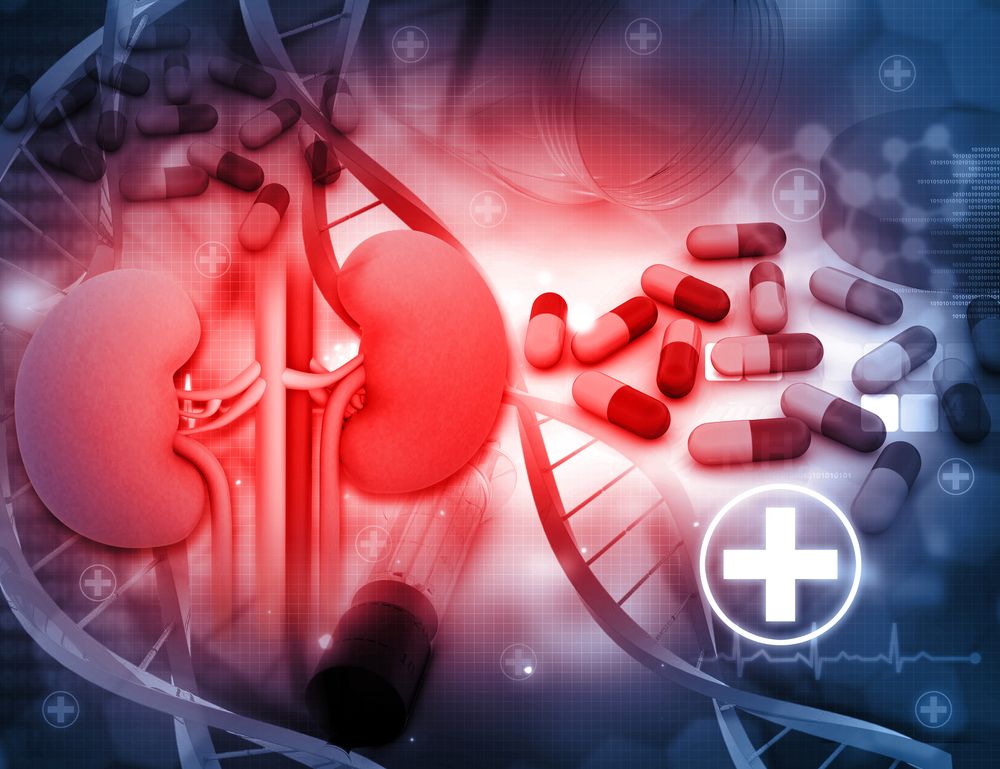New SGLT2 Inhibitor Luseogliflozin May Protect Kidneys in Diabetes
Finding more effective therapies for preventing diabetic nephropathy would be attractive, and a recent study has pointed to SGLT2 inhibitors as promising candidates in this area.
© bluebay/Shutterstock.com

Studies have suggested that current therapeutic agents for diabetes slow, but do not prevent the development of chronic kidney disease (CKD). Finding more effective therapies for preventing diabetic nephropathy would be attractive, and a recent study has pointed to SGLT2 inhibitors as promising candidates in this area.
The study looked at a new SGLT2 inhibitor, luseogliflozin (not available in the US), given alone or in combination with lisinopril. Results suggested that the new SGLT2 inhibitor could potentially be renoprotective-- especially when combined with Lisinopril-- in rat models of advanced diabetic nephropathy.
The study, by lead author Richard Roman, PhD, of the University of Mississippi Medical Center in Jackson, Mississippi and colleagues at Taisho Pharmaceutical Company in Japan, was recently published online.
The study adds to growing evidence from clinical and animal studies that blocking sodium and glucose co-transport with SGLT2 inhibitors could be renoprotective, though results are not consistent across studies.
One explanation for these findings could be that the mechanism underlying diabetic nephropathy might involve upregulation of SGLT2 receptors, increased glucose transport, and glomerular hyperfiltration.
The researchers did experiments on 52 male Dahl S rats, with diabetes induced by streptozotocin (Dahl-STZ). Past animal models for the study of diabetic nephropathy have not represented the full spectrum of the human disease. Dahl-STZ rats represent a new model for type 1 diabetic nephropathy in which the rats develop both the early features of the nephropathy, as well as disease with more severe features.
Rats were treated with implanted longacting insulin to keep blood glucose levels between 300-600 mg/dL. Then they were randomly assigned to five treatment groups: Group 1: controls (n=9), Group 2: luseogliflozin 10 mg/kg daily (n=9), Group 3: lisinopril 20 mg/kg daily (n=9), Group 4: luseogliflozin plus lisinopril (n=9), and Group 5: a second insulin implant to normalize blood glucose levels (n=9). At the end of 8 weeks, the researchers used ultrasound and collected urine and plasma samples to analyze renal hemodynamics and renal clearance in the rats. Then they removed the rats’ left kidneys and, in a blinded manner, examined them for glomerulosclerosis.
Key results showed:
Luseogliflozin
• Increased fractional excretion of glucose
• Normalized blood glucose and HbA1c levels
• Had no effect on blood pressure
• Decreased glomerular hyperfiltration, renal hypertrophy, and renal injury
• Had no effect on the development of proteinuria
Lisinopril
• Decreased blood pressure from about 145 mmHg to 120 mmHg
• Decreased glomerular hyperfiltration, renal hypertrophy, and renal injury
Combination therapy
• Increased the fractional excretion of glucose
• Normalized blood glucose and HbA1c levels
• Decreased blood pressure
• Decreased renal hypertrophy
• Decreased glomerular hyperfiltration to the same extent as luseogliflozin and lisinopril monotherapy
• Was more effective at preventing proteinuria and decreasing kidney injury than luseogliflozin or lisinopril monotherapy
“The results suggest that effective control of both hyperglycemia and blood pressure with combined treatment with SGLT2 and ACE inhibitors is an attractive therapeutic option for treatment of both type 1 and 2 diabetes that can slow the development and progression of CKD,” the authors concluded.
The study was funded by Taisho Pharmaceutical Co., Ltd.
Take-home Points
• In rat models, the new SGLT2 inhibitor luseogliflozin increased fractional excretion of glucose, normalized blood glucose and HbA1c levels, and decreased glomerular hyperfiltration, renal hypertrophy, and renal injury
• Luseogliflozin had no effect on blood pressure and the development of proteinuria.
• Combined therapy with luseogliflozin and lisinopril increased the fractional excretion of glucose, normalized blood glucose and HbA1c levels, and decreased blood pressure, renal hypertrophy and glomerular hyperfiltration.
• Combined therapy was more effective at preventing proteinuria and decreasing kidney injury than luseogliflozin or lisinopril monotherapy.
• Combined therapy with luseogluflozin and Lisinopril might help slow the progression of CKD in patients with diabetes.
Reference: Kojima N, et al. Renoprotective effects of combined SGLT2 and ACE inhibitor therapy in diabetic Dahl S rats. Physiol Rep. Jul 2015; 3(7):e12436.